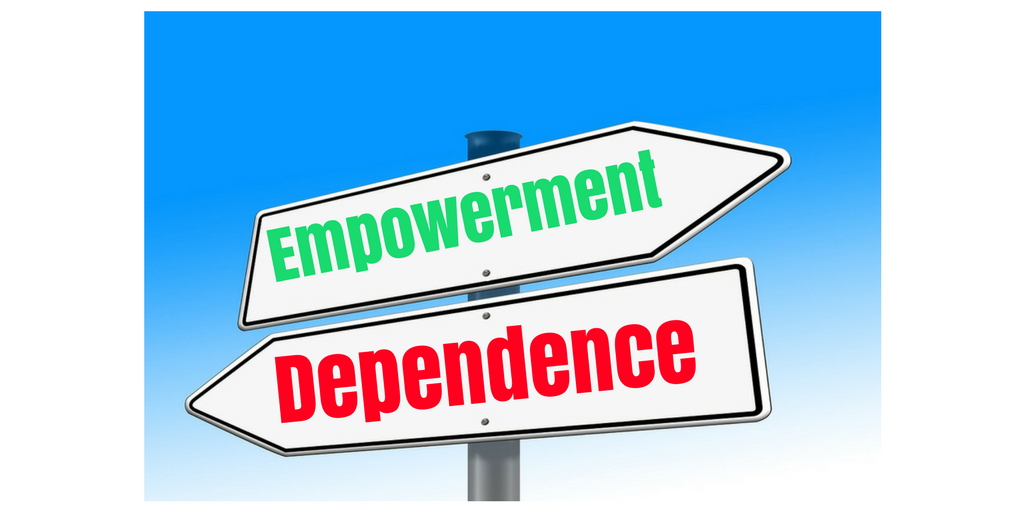Identifying the Fertile Soil for Strong Leadership
The impact of leadership
I think we’ve all seen and can easily identify poor leadership. I’m sure at one point all of us have experienced poor leadership, whether it was in our youth on a team or in a club, in our supervisors at work or in our government or communities. There are many examples of great teams, businesses and communities that falter or never meet their full potential because of poor leadership. This speaks to how crucial strong leadership is to success and development.
Most of us think of leadership as a top down hierarchy and something that is fixed by those in the higher positions. In most cases it’s true that leadership rests with those at the top. The impact and success of everyone involved is often dictated by the skill and competency of those chosen to lead. So a strong understanding of what constitutes leadership is important for both those chosen to lead and for those expected to follow leaders.
Let’s look at some famous quotes and see what we can pull from them to get perspective on good leadership.
“As we look ahead into the next century, Leaders will be those who empower others.”
– Bill Gates
Empowerment is this century’s leadership (that’s a common aphorism of mine, heavily borrowed from Mr. Gates). This idea is meaningful in pretty much every situation, from employers empowering their employees to be the best at their positions, government empowering its citizens to thrive and improve their lives, or sports team captains empowering their teammates to go the extra mile. The need to consider empowerment as an essential component of leadership is increasingly becoming of critical importance.
“Leadership is not about being in charge. Leadership is about taking care of those in your charge.”
– Simon Sinek
This is a personal favorite of mine, especially when you’re talking about organizational leadership. In a company or organization, supporting and developing the skills of those you are required to lead is, in my opinion, the essence of good leadership. This idea aligns well with a leadership focus on empowerment. When you lead, you are committing to bringing everyone up together–not standing on the heads of those who follow you.
“Remember the difference between a boss and a leader; a boss says “Go!” a leader says “Let’s go!”
– E.M. Kelly
Collaboration and the ability to build strong relationships and partnerships are key elements in effective leadership. Whether those relationships are built internally or externally, leadership is about being a part of something greater than yourself and being able to inspire others to follow you. This brings me to another personal motto: Influence is greater than power. When you wield power, others are compelled to follow you; with influence, people choose to follow you.
A good leader takes a little more than their share of the blame, a little less than their share of the credit.”
– Arnold H. Glasow
Humility and integrity are other important foundations of leadership. This includes owning the mistakes and missteps and giving recognition for the efforts and talents of those with whom you’ve collaborated. In many ways, I believe this is generally a key missing piece in political leadership. Too often people are focused on self-preservation and keeping in the good graces of those who put them in their leadership roles and will too will often sacrifice their integrity to maintain their status.
Lead from the side
Another important element to consider is that leadership doesn’t have to only be top down. Leadership is not about a position– it is more about actions. In circumstances of poor, hierarchical leadership, the actions of those lower down in the hierarchy can introduce the qualities of supportive empowerment, collaboration, influence, humility, and integrity that can provide leadership from a peer or mentor level. This can be encouraged by modeling the qualities of good leadership with your co-workers and clients, and cultivating an environment of appreciation, transparency and support. Making room for leading from the side can create meaningful and lasting change and progress. Admittedly, it is an uphill battle to bring organizational change from the side or the middle, but the point is, leadership doesn’t have to only happen from the top down. There are often great leaders who empower and inspire others from the break room table, the next cubicle over or at the water cooler. If we all know what those qualities look like we can empower those who empower us.
Written by W. Coby Milne – Partner at Roman 3 Solutions Inc.
Roman 3 is an advising and solutions firm that specializes in inspiring progressive action, creating a culture of innovation, and assisting organizations in implementing transformative change. We help you build capacity, collaborate, be progressive, and grow to your full potential. For more information on our services and support check us out at www.roman3.ca




